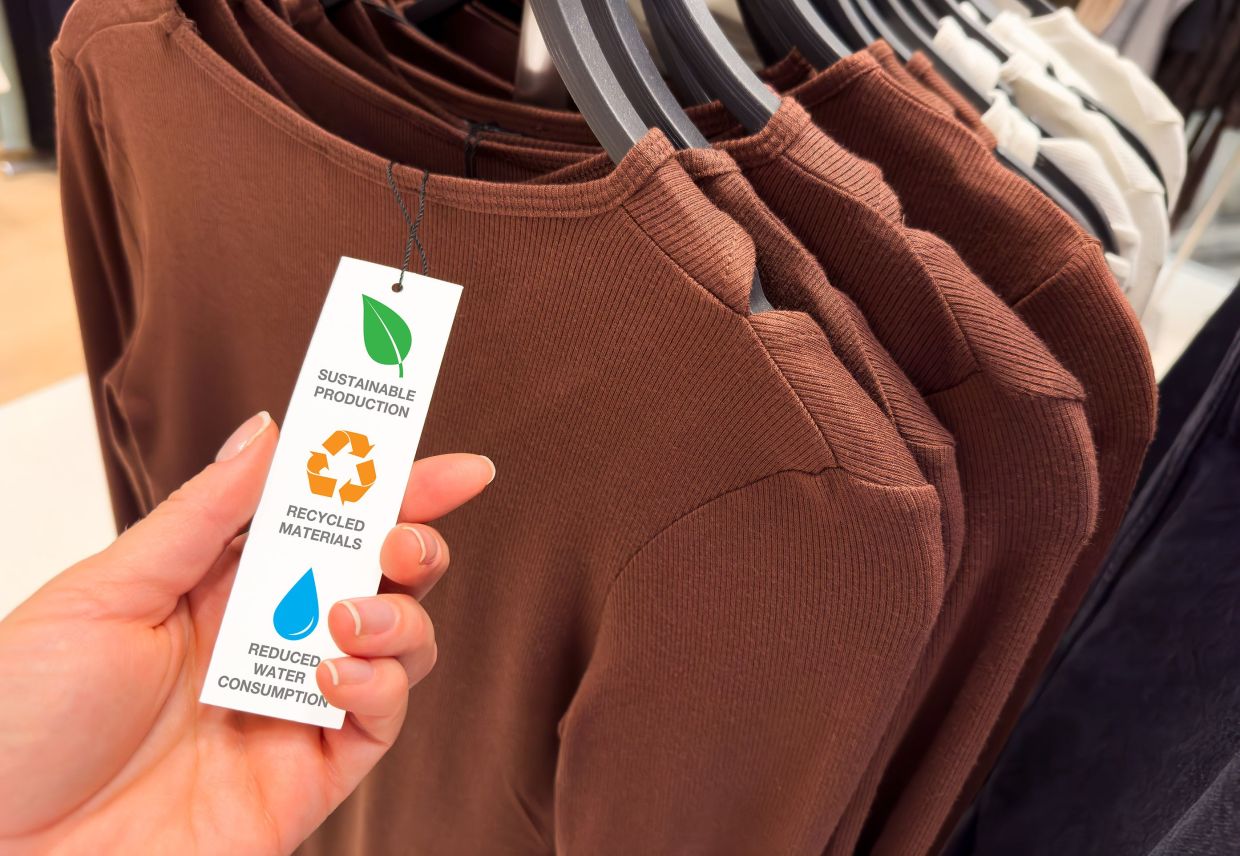
Clothing labels now offer a wealth of information to help shoppers make more informed choices. Photo: AFP
Fast fashion still reigns supreme in the fashion world, but that doesn't mean consumers can't make more informed choices to make their wardrobes greener.
In conjunction with World Environment Day, which recently took place (June 5), here are three tips, tricks and habits to adopt in order to reduce the environmental impact of your clothes and consume more responsibly.
Start with a spring-clean
Sorting through your closet means confronting the scale of the task at hand! While it may seem easy for some, others find it hard to get rid of certain items of clothing for various, often sentimental, reasons.
How many times have you thought you might, one day, slip into those jeans again? But there's nothing eco-friendly about keeping unused clothes.
To sort out properly, you need to start by emptying out all the contents of your closet, and then put everything into three piles: what to keep, what to sell, and what to recycle – don't just throw your old clothes in the garbage where they'll end up causing pollution.
From a green point of view, it's important to differentiate between long-lasting clothes that you'll be able to wear again and again for years to come, and clothes that you've bought on a whim – which you wear, of course, but which have a very limited lifespan, and which you'll need to sort through again.
Read more: How fashion in Malaysia is embracing the idea of conscious consumption
Note that it's pointless to keep clothes that no longer fit, whose cuts no longer suit you, or that are worn out.
In the first two cases, they can be used by someone else, who then won't need to buy new items, while in the third case, they can be recycled to create new clothes or objects.
Look at labels
Take advantage of this sort-out to take a look at the labels on your clothes.
Where were they made? What materials were used? To meet consumer demand, some fashion companies have been working to make their clothing more transparent and traceable.
Labels are therefore your best allies for obtaining a wealth of essential information before choosing a garment.
The New York-based start-up Eon has even been working on a digital identity system designed to trace a garment from the beginning to the end of its life cycle, reflecting a real drive for transparency.
Beyond transparency, labels can also help you see more clearly how you consume, and become aware of the quantity of clothes made from environmentally harmful fibers that you're likely to have in your wardrobe. Plus, they can help you realise just how far a dress or pair of jeans has travelled before arriving in your wardrobe.
The aim isn't to make you feel guilty, or to have you blame yourself for all the planet's ills, but simply to help you make more informed choices.
If the labels on your clothes seem indecipherable, you can use apps and platforms like Clear Fashion and SloWeAre, which analyse the commitments of ready-to-wear brands and provide the information needed to determine whether a given label complies with specifications covering environmental aspects, workers' conditions, health and animal welfare, among other things.
Resell, recycle, repair
Last but not least, give your old clothes a new life. Of course, this doesn't mean throwing them in the trash, but rather reusing them in one way or another to reduce their environmental impact.
Several solutions are available. You can opt for resale on the second-hand market, which will not only save you space but also make you some money, without causing pollution. In fact, some brands have already launched their own resale platforms and will take back your clothes in exchange for vouchers.
It's also possible to recycle your clothes via collection points set up by specialist organisations, as well as in certain stores.
If you've opted for returnable garments at the time of purchase, simply return the used item to the brand to reclaim your deposit.
Read more: Luxury fashion house experiments with sustainable cotton production in Italy
Upcycling is now firmly established as a way of creating new garments and other objects from waste products that were previously destined for the trash. With your old socks or bathing suits, for example, many designers are now able to create exceptional new pieces.
Worn or damaged clothing can be recycled. But if you don't want to part with these garments – and you know you'll wear them again – it's always possible to repair them, either yourself or through a professional service.
The global pandemic has not only brought sewing back into fashion, but also the DIY approach. Thanks to the host of tutorials available on the internet, people can now learn to alter, patch up and customise garments in no time, even on a tight budget.
All that's left to do is get started... – AFP Relaxnews









































